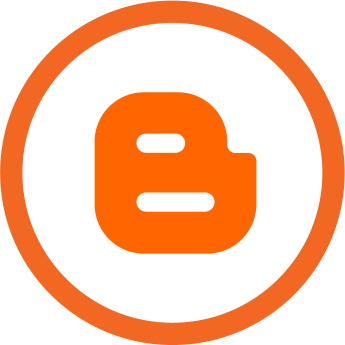A User's Strategy to learn German
Stephen S. Hirsch - Pennsylvania, USA
I've been self-studying German for about 2 ½ years spending about 1 to 1 ½ hours per day on the effort. I am glad to share my experience with blog readers.
We all have motivation for learning a new language. Let me begin by sharing mine. I am a chemist by training and profession. Germany was undisputed leader in the chemical sciences between the mid-19th and mid-20th centuries. As a result, much of chemistry's findings were published in German. To obtain even an undergraduate degree in chemistry in the 1950's it was necessary to demonstrate sufficient proficiency in German to translate a technical paper with aid of a dictionary. I was able to do that, but I acknowledge that I put limited effort into actually learning the language in my German classes. It is my nature not to leave things unfinished, so some fifty-five years later I undertook to learn German more earnestly.
How did I do that? By selection from the multiple means available for a self-study undertaking: making use of online courses and training aids, cassette tapes and CDs, and books. By frequenting thrift shops one can find large amounts of foreign language training materials at nominal cost, but I did augment this with purchased resources. While I was commuting to work I listened to many courses and drills in the car—in addition to dedicating study time at lunch and at home. Now that I'm retired, it is mostly work at my desk. The most useful primary materials were the free online comprehensive German course by Gene Moutoux (navigate to Essential German), and the two twelve-cassette or -CD (twenty-four units in all with workbooks included) series Mastering German developed by the Foreign Service Institute (Click here for volume one of the cassette version, which is cheaper on the secondary market than the newer CDs). In addition to Amazon, also look on eBay and Google for these sets. Since the cassette sets will be previously owned, be certain each has the book included. Tip: If you are a new learner, start with the Moutoux material; it is better organized for initial learning (but doesn't have audio material). (I have the five-part German Rosetta Stone set but haven't used it yet—see additional comments in Part II of this blog that will follow.) I also make continuing use of the Antosch & Lin German Flashcards as a study aid. You might also register at http://www.germanpod101.com/ for free word-of-the-day e-mailings (although they will also offer you paid-for services, which I haven't tried).
I make much use of dual language (side-by-side translations) materials as study aids. A number of these are available in book form (See here) and on the Web. See also (there are more on the site than the one that comes up—refer to the index at left of the window) http://www.lonweb.org/daisy/ds-german-lorna.htm. Another resource that I use daily is a German-English parallel Bible. While this contains advanced text, it is particularly useful for learners with knowledge of the Scriptures since the material is in context and, therefore, user-friendly.
I have accumulated a large collection of computer files relating to German grammar and usage (354 files in 58 folders). These are mostly from the Web. This is sufficiently extensive for me to look up and resolve almost any question regarding grammar/usage I encounter. In addition, I rely on a number of online data bases for daily use such as dict.cc German-English Dictionary, Google Translate, and canoonet.
In Part II of this blog that will follow in several weeks I will address the categories of language study that I use and my experience with each.
Stephen S. Hirsch - Pennsylvania, USA
I've been self-studying German for about 2 ½ years spending about 1 to 1 ½ hours per day on the effort. I am glad to share my experience with blog readers.
We all have motivation for learning a new language. Let me begin by sharing mine. I am a chemist by training and profession. Germany was undisputed leader in the chemical sciences between the mid-19th and mid-20th centuries. As a result, much of chemistry's findings were published in German. To obtain even an undergraduate degree in chemistry in the 1950's it was necessary to demonstrate sufficient proficiency in German to translate a technical paper with aid of a dictionary. I was able to do that, but I acknowledge that I put limited effort into actually learning the language in my German classes. It is my nature not to leave things unfinished, so some fifty-five years later I undertook to learn German more earnestly.
How did I do that? By selection from the multiple means available for a self-study undertaking: making use of online courses and training aids, cassette tapes and CDs, and books. By frequenting thrift shops one can find large amounts of foreign language training materials at nominal cost, but I did augment this with purchased resources. While I was commuting to work I listened to many courses and drills in the car—in addition to dedicating study time at lunch and at home. Now that I'm retired, it is mostly work at my desk. The most useful primary materials were the free online comprehensive German course by Gene Moutoux (navigate to Essential German), and the two twelve-cassette or -CD (twenty-four units in all with workbooks included) series Mastering German developed by the Foreign Service Institute (Click here for volume one of the cassette version, which is cheaper on the secondary market than the newer CDs). In addition to Amazon, also look on eBay and Google for these sets. Since the cassette sets will be previously owned, be certain each has the book included. Tip: If you are a new learner, start with the Moutoux material; it is better organized for initial learning (but doesn't have audio material). (I have the five-part German Rosetta Stone set but haven't used it yet—see additional comments in Part II of this blog that will follow.) I also make continuing use of the Antosch & Lin German Flashcards as a study aid. You might also register at http://www.germanpod101.com/ for free word-of-the-day e-mailings (although they will also offer you paid-for services, which I haven't tried).
I make much use of dual language (side-by-side translations) materials as study aids. A number of these are available in book form (See here) and on the Web. See also (there are more on the site than the one that comes up—refer to the index at left of the window) http://www.lonweb.org/daisy/ds-german-lorna.htm. Another resource that I use daily is a German-English parallel Bible. While this contains advanced text, it is particularly useful for learners with knowledge of the Scriptures since the material is in context and, therefore, user-friendly.
I have accumulated a large collection of computer files relating to German grammar and usage (354 files in 58 folders). These are mostly from the Web. This is sufficiently extensive for me to look up and resolve almost any question regarding grammar/usage I encounter. In addition, I rely on a number of online data bases for daily use such as dict.cc German-English Dictionary, Google Translate, and canoonet.
In Part II of this blog that will follow in several weeks I will address the categories of language study that I use and my experience with each.




